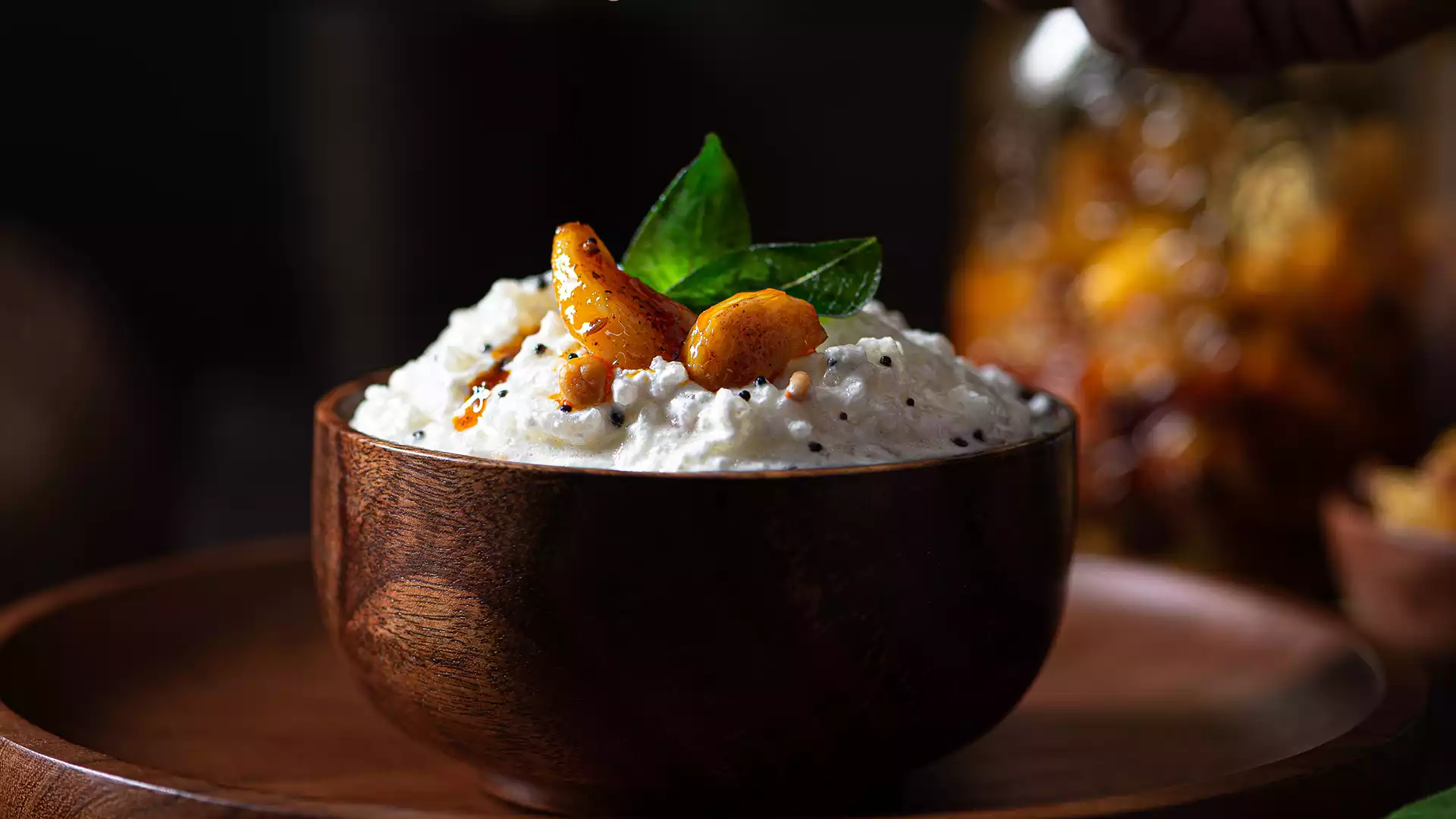
The Thanjavur royal heirloom recipes use lots of chillies, freshly pounded spices thus making the food very rustic. The mashyache kebab (pan-fried poppy seeds and green chilli – meared fish fillets), komdiche kebab (chicken kebab with coriander, pepper and ginger), kesari maas (dry mutton mince with saffron and spices), kelyachi bhaji (raw banana tossed with karivadagam and hurit, a mixture made by roasting lentils, rice and sesame seeds and ground into a coarse powder) are a part of regular South Indian meal.
What makes the food of the Thanjavur royal kitchen so unique is the distinct and unmistakable influence of the Marathas. The Kola urundai is an example which is very similar to Marathi Shunti kebab. In this, the fish is delicately tied with banana leaves into a ball shape and deep fried.
Vegans can relish the Tambrahm style of cuisine because its assortment of dishes are creative products of the best vegetarian traditions of Brahmins. Tamil Brahmin cuisine is all about an exciting line-up of authentic vegetarian dishes born out of traditional culinary practices. These flavours are unlike any other varieties of Tamil Nadu cuisines. Tambrahm (Tamil Brahmin) dishes are generally less spicy, and all its recipes take the nutritional value of the ingredients into consideration.
Typically, Tamil Brahmins combine breakfast and lunch into a heavy brunch at around 10-11 am. The gustatory treat is characterised by their Elai Saapadu (banana leaf meal), a fusion of all the flavoursome dishes that the cuisine is known for. The signature ones are Sambhar, Thogayal, Kootu, Paruppusili, Vatha Kuzhambu, Kichadi, Pachadi, Mor Kuzhambu, Ulunthuvada, and many more.
The Tambrahm cuisine has two different styles of cooking, the Iyer and the Iyengar varieties. The cuisine has explored the infinite possibilities of vegetarian dishes, with the Iyer variety alone having 27 types of sambhar and 45 types of rasam, some of which share similarities with the Iyengar style.
The Iyengar style practises the satvic tradition by avoiding the use of onion or garlic while Iyer weddings are characterized by Vengaya sambhar made with shallots. The Brahmins use ‘Amudhu’ (translated as ‘nectar’) as a suffix to name their dishes. The tangy Rasam is called Sathamudhu; Poriyal (fried vegetables) is referred to as Karamudhu; and Payasam is known as Thirukanamadhu.
The Iyengar vadas soaked in curd are known as Thayirvada, while the Iyer cuisine has vadas which are crispy and known as Aama vada, made of lentils. The desserts of Tambrahm cuisine are just as delicious and dissolve in your mouth from the very first bite. The famous Iyengar dessert known as Akkaravadisal is made from milk, ghee, jaggery, cashew, saffron, raisins and edible camphor while Iyer desserts are typically Kheer (rice or semolina) or traditional sweets like Mysore Pak. The heavenly Thirattippal is another Brahmin dessert made from condensed milk and jaggery.
One can lose count of the number of rice dishes that a Tambrahm cuisine can whip up. Puliodhare, Kadamba sadham, Sambhar sadham, Thayir sadham, Lemon sadham, Coconut sadham are only a few of the mouth-watering ones. Fenugreek, known as Vendhayam in Tamil, is used generously in most dishes. Pepper, cumin, mustard seeds and asafoetida are the commonly used spices in Tambrahm cuisine.
Another highlight of the cuisine is the freshly brewed filter coffee. There are fans around the globe for this sought-after aromatic coffee. Curd rice served with pickles is an integral part of the Brahmin meal, which is again considered good for the stomach. There are many canteens in Chennai that serve authentic Brahmin cuisine.